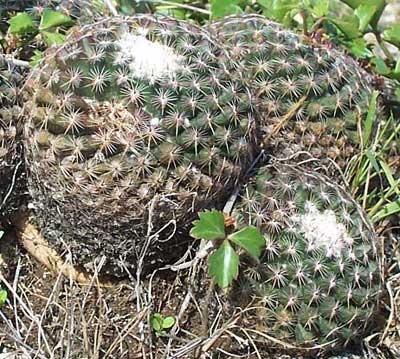Excerpts from Jim Conrad's
Naturalist Newsletter
from the March 4, 2006 Newsletter Written at Hacienda San Juan Lizárraga one kilometer east of Telchac Pueblo, Yucatán, MÉXICO and issued from Hotel Reef Yucatan 13 kms to the north
YUCATAN ENDEMICS

The Yucatan is a geological PENINSULA, but it is an ecological ISLAND. It's isolated from other land toward the north, east and west by the sea, and to the south it's isolated from the rest of Mexico by this climatological fact: The Yucatan is much more arid than that part of Mexico adjoining it toward the south.
The Yucatan, then, is an ecological island of aridity, and Darwin's experiences in the Galapagos reminds us that on islands unique species tend to arise through evolutionary processes. That's the case with the Yucatan.
When a biologist says that an organism is endemic to a certain area, he or she means that in the whole world that thing is found only in that limited area. A surprising number of organisms are endemic to the Yucatan.
Nearly 10% of the Yucatan's plant species are endemics. The Yucatan is home to 14 endemic cactus species, and here in the northern Yucatan -- the most arid part of the arid island -- we are home to ten of them.
Just among the sand dunes of Celestún along the Yucatan's western coast live three endemic plant species: a vine in the Milkweed Family, MATELEA YUCATANENSIS, and; two members of the Coffee Family, a bush, EXOSTEMA CARIBAEUM and an herb, SPERMACOCE CONFUSA.
Among animals, the Yucatan's reptiles and amphibians are particularly rich in endemics. At Celestún 15 endemic reptiles and amphibians have been identified.
At Río Lagartos on the northern coast, two fish species inhabiting freshwater pools are endemic: TYPHLIASINA PEARSEI and OPHISTHRNON INFERNALE.
For endemic birds, Cozumel Island off the Yucatan's eastern coast is especially notable because it is home to three species found nowhere else on Earth: the Cozumel Emerald (a hummingbird), the Cozumel Vireo and the Cozumel Thrasher. There is much more on the Yucatan's endemic birds here.
One worrisome feature about all this is that currently a lot of land along the Yucatan's northern coast is being "developed," largely by English-speaking northerners building retirement homes. The first step in this process is to "clean away the scrub," which is precisely where so many of our endemic species live.
Theoretically, regulations are in place to protect important species but from what I see with my own eyes economic realities are allowing too much scrub to be "cleaned up."
You may be interested in Crain Metrick's The Mesoamerican Biological Corridor.